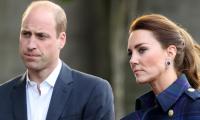Though six of my college-teaching years were at a military academy, where I wore a uniform and my students saluted me as class began, it never occurred to me to carry a loaded gun (even concealed). For the remaining nine years, I taught at a conservative college in rural Pennsylvania where, you may be surprised to learn, guns were then forbidden on campus. But that, of course, was in another age. Only at the tail end of my college teaching career were lockable doors installed and voluntary lockdown drills instituted.
I never ran such a drill myself.
Why not? Because I refused to inject more fear into the minds of my students. In truth, given the unimaginably violent chaos of a school shooting, you’d almost automatically know what to do: lock the door(s) to try to keep the shooter out, call 911, and duck and cover (which will sound familiar to veterans of early Cold War era schooling). If cornered and as a last resort, perhaps you’d even rush the shooter. My students, who were young adults, could have plausibly done this. Children in the third and fourth grades, as in the Uvalde slaughter, have no such option.
That mass shooting took place at a hardened school with locking doors, one that ran lockdown and evacuation drills regularly, and had fences. And yet, of course, none of that, including 911 calls from the students, prevented mass death. Not even the presence of dozens of heavily armed police inside and outside the school mattered because the commander at the scene misread the situation and refused to act. Well-trained ‘good guys with guns’ proved remarkably useless against the bad guy with a gun because the ‘good guys’ backed off, waited, and then waited some more, more than an hour in all, an excruciating and unconscionable delay that cost lives.
But combat can be like that. It’s chaotic. It’s confusing. People freeze or act too quickly. It’s not hard to make bad decisions under deadly pressure. At Uvalde, the police disregarded standard operating procedure that directs the immediate engagement of the shooter until he’s ‘neutralized’. But we shouldn’t be surprised. Fear and uncertainty cloud the judgment even of all-too-hardened professionals, which should teach us something about the limitations of the hard option.
A related hardening measure that’s been proposed repeatedly, including by former President Trump, is to arm and train teachers to confront shooters. It’s a comforting fantasy, imagining teachers as Dirty Harry-like figures, blowing away bad guys with poise and precision. Sadly, it’s just that, a fantasy. Imagine teachers with guns, caught by surprise, panicking as their students are shot before their eyes. How likely are they to respond calmly with deadly accuracy against school shooter(s) who, the odds are, will outgun them? ‘Friendly fire’ incidents happen all too frequently even in combat featuring highly trained and experienced soldiers. Armed teachers could end up accidentally shooting one or more of their students as they tried to engage the shooter(s). How could we possibly ask teachers to bear such a burden?
Excerpted: ‘Making US Schools ‘Harder Targets’ Is Not the Answer’. Courtesy: Commondreams.org
Economic nationalism remains potent political narrative, influencing both Republican and Democratic platforms
Yes, blockchain, decentralised and distributed ledger technology, is foundational backbone of cryptocurrencies
Blue carbon covers merely 2% of ocean surface but absorbs 50% of carbon dioxide
During WWII, Japan’s economy and national morale were plummeted by its doomed alliance with Germany
One can imagine how confusion will affect psyche of not just observers but also of participants of various ongoing...
After November 30, it will be impossible for ordinary internet users to access all banned websites, including X







